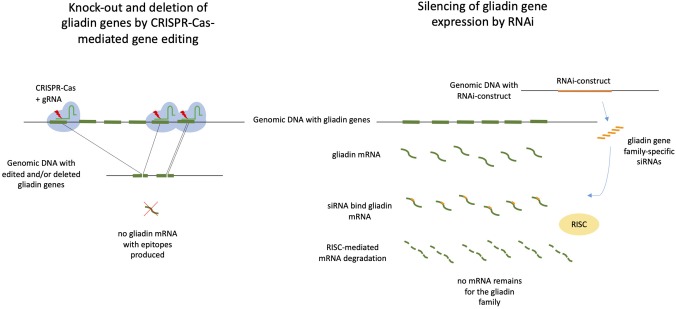Figure 1.
CRISPR/Cas9-mediated gene editing and deleting vs. RNAi-mediated silencing of gliadin genes in wheat. Both approaches may be used to prevent that gliadin proteins with Coeliac disease epitopes are being produced. On the left: CRISPR/Cas9 with gliadin-specific gRNAs target gliadins genes resulting in loss of genomic fragments containing full gliadin genes and/or small internal deletions in the gliadin genes. Both deletions may lead to knock-out of gliadin gene expression. The ultimate mutant wheat plants are free of CRISPR/Cas9 constructs. On the right: A RNAi construct targeting gliadin genes that has been inserted in the wheat genomic DNA produces small interfering RNAs (siRNAs), which bind to gliadin mRNA. The complex of mRNA and siRNA is recognized by the plant RNA-induced silencing complex (RISC), resulting of degradation of mRNA and silencing of gliadin gene expression. A RNAi construct targets one of the gliadin gene families.

